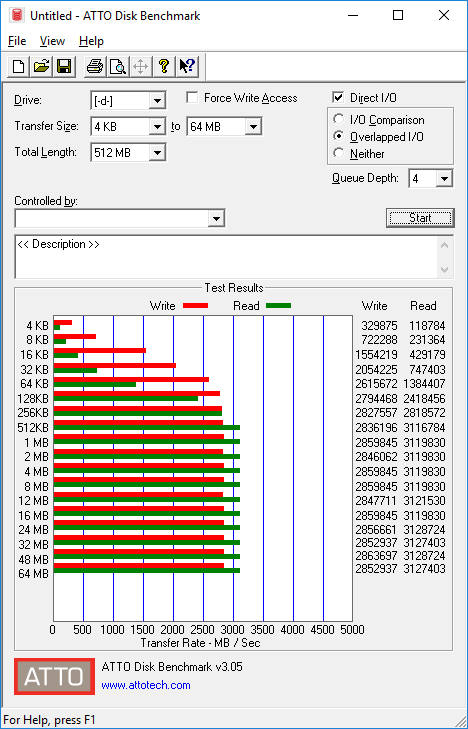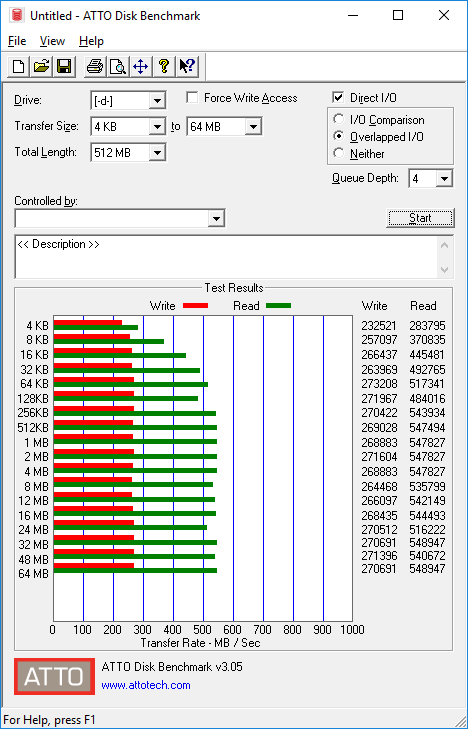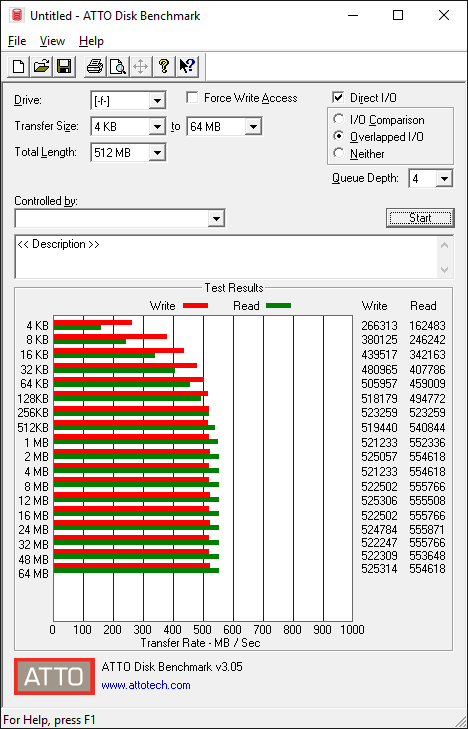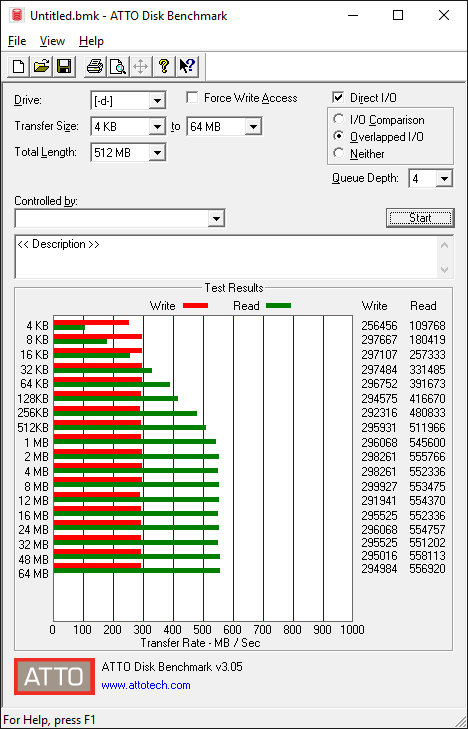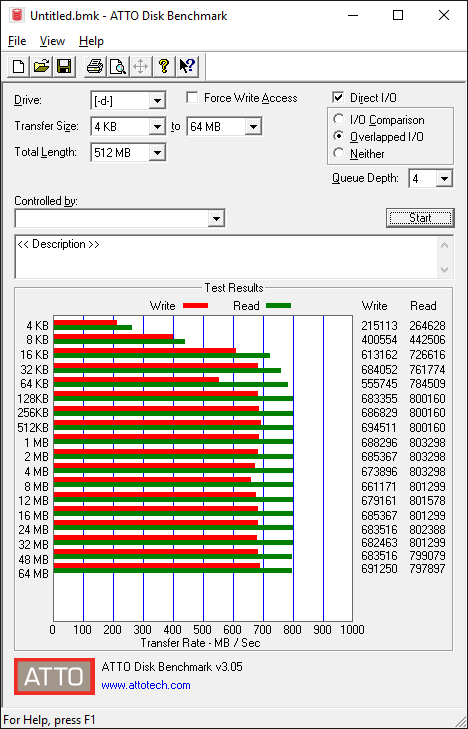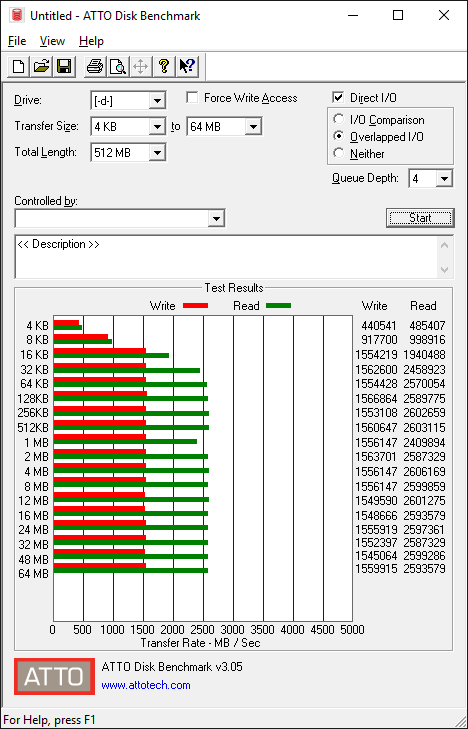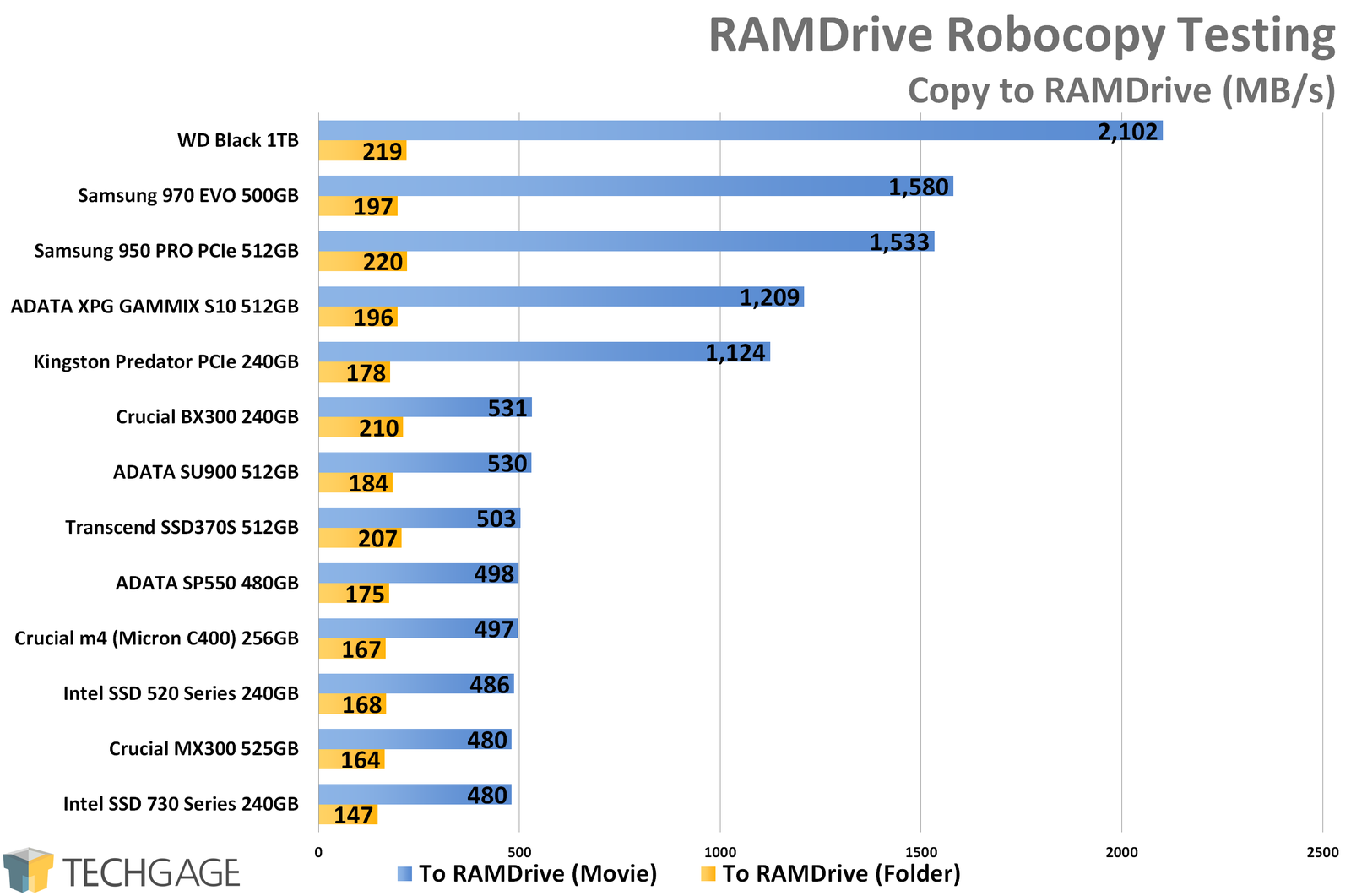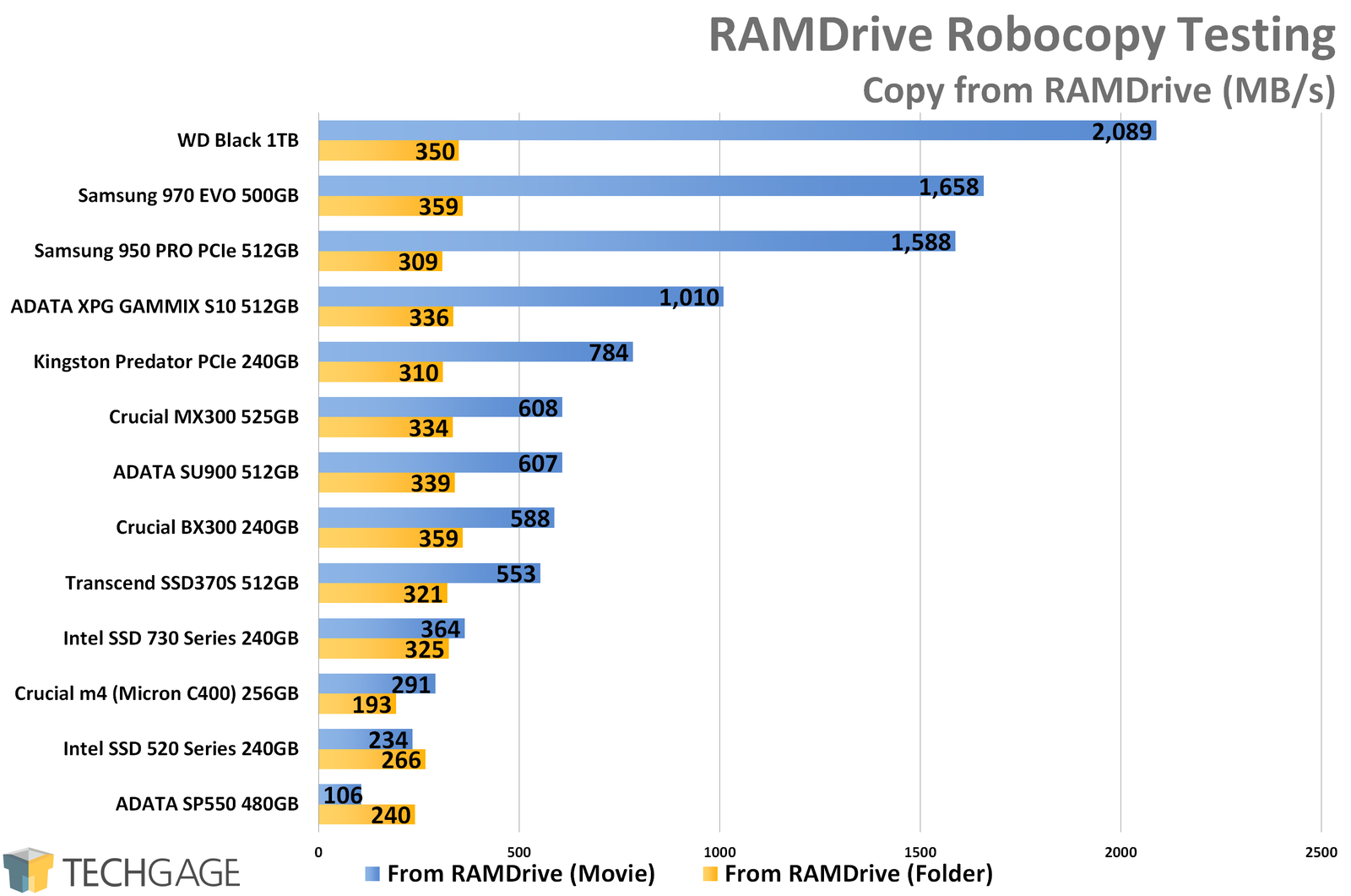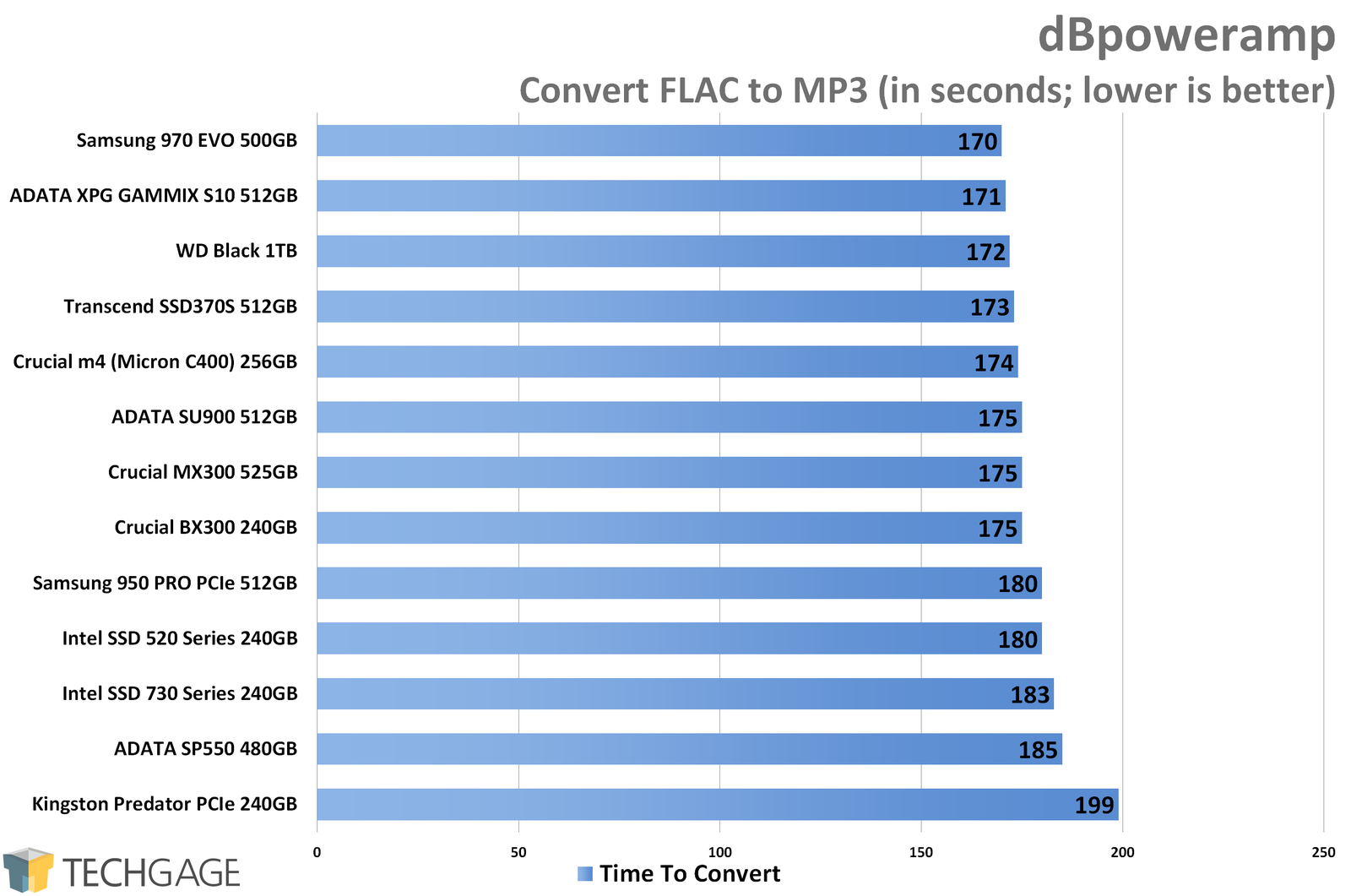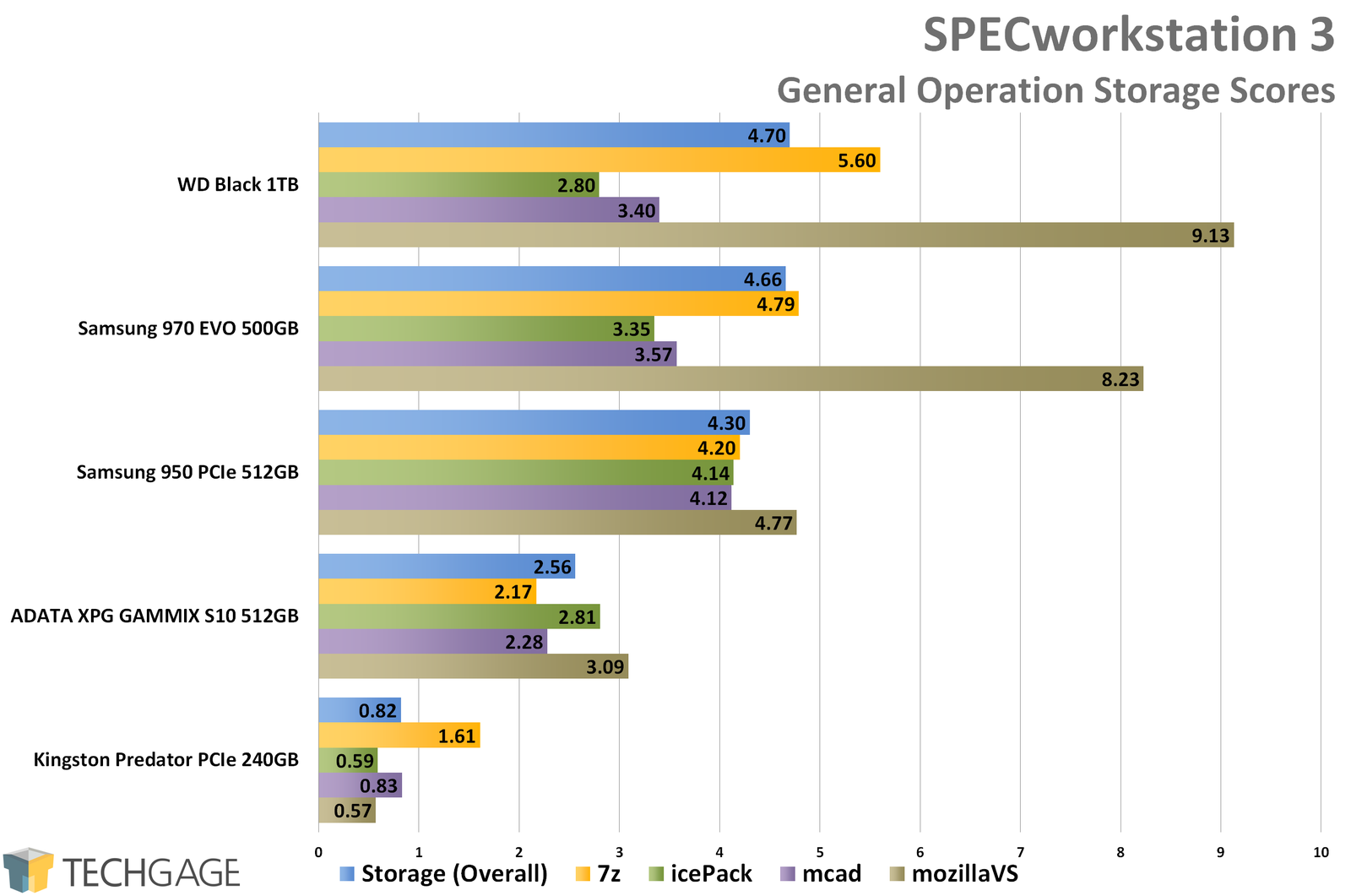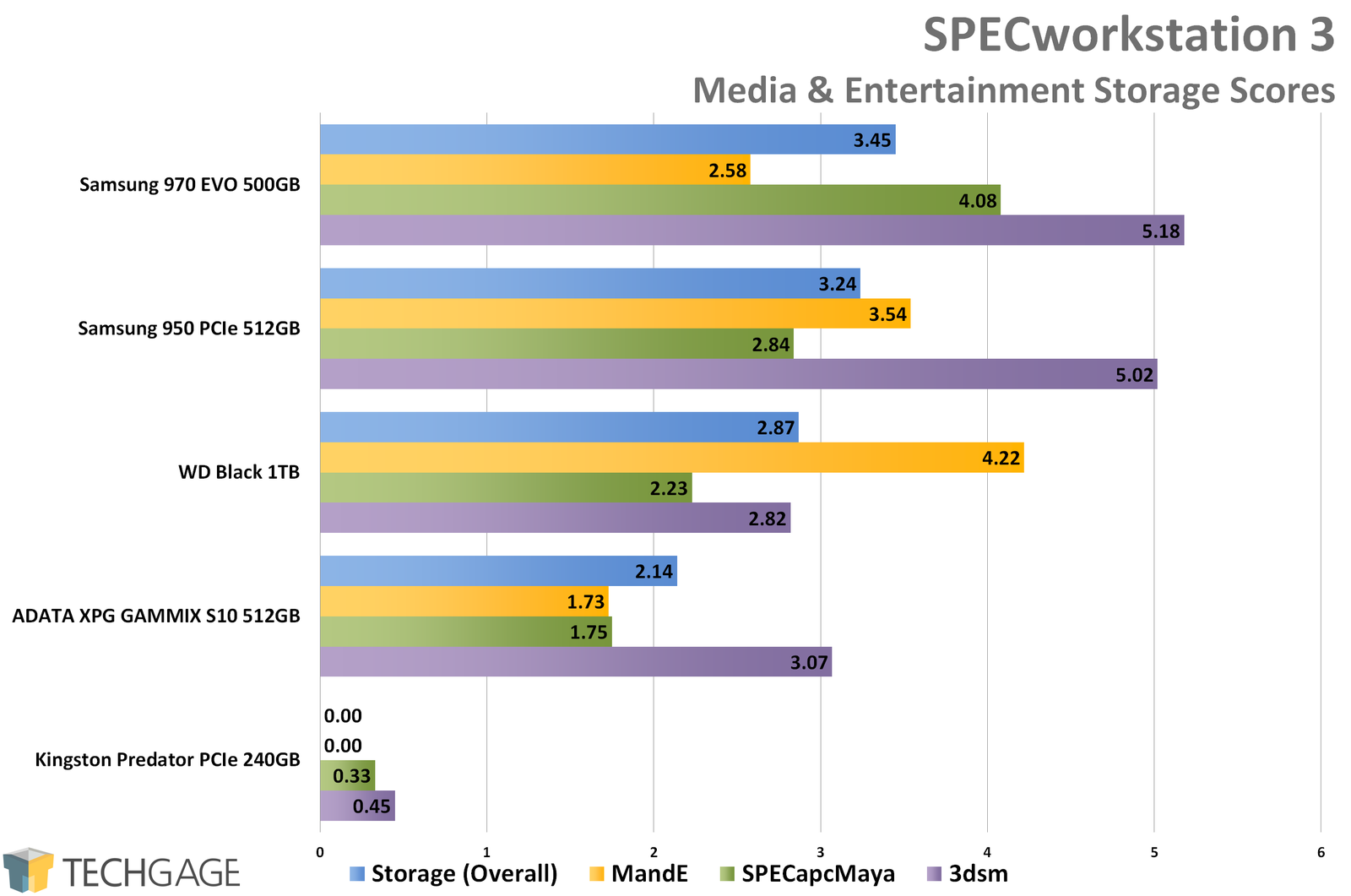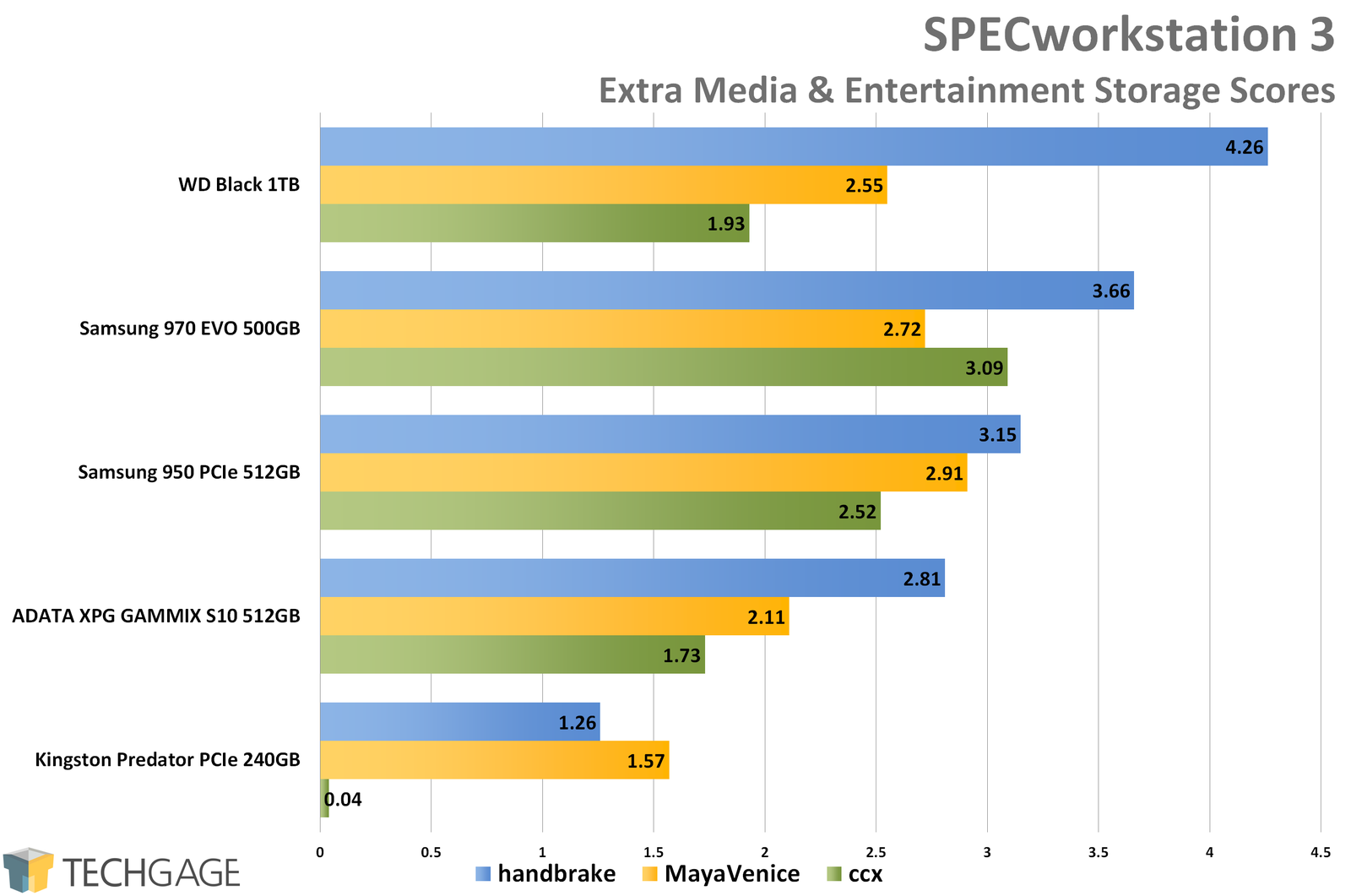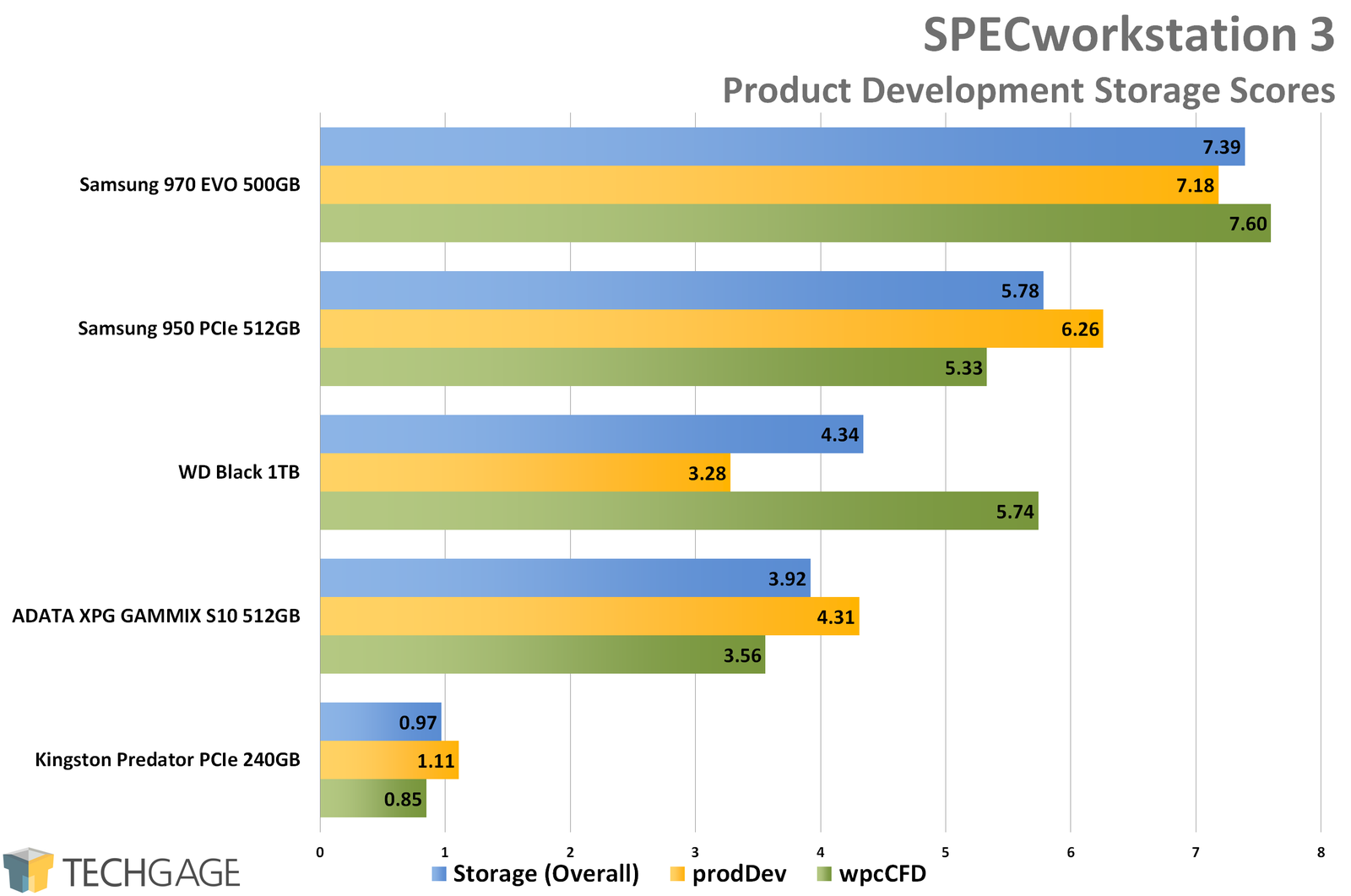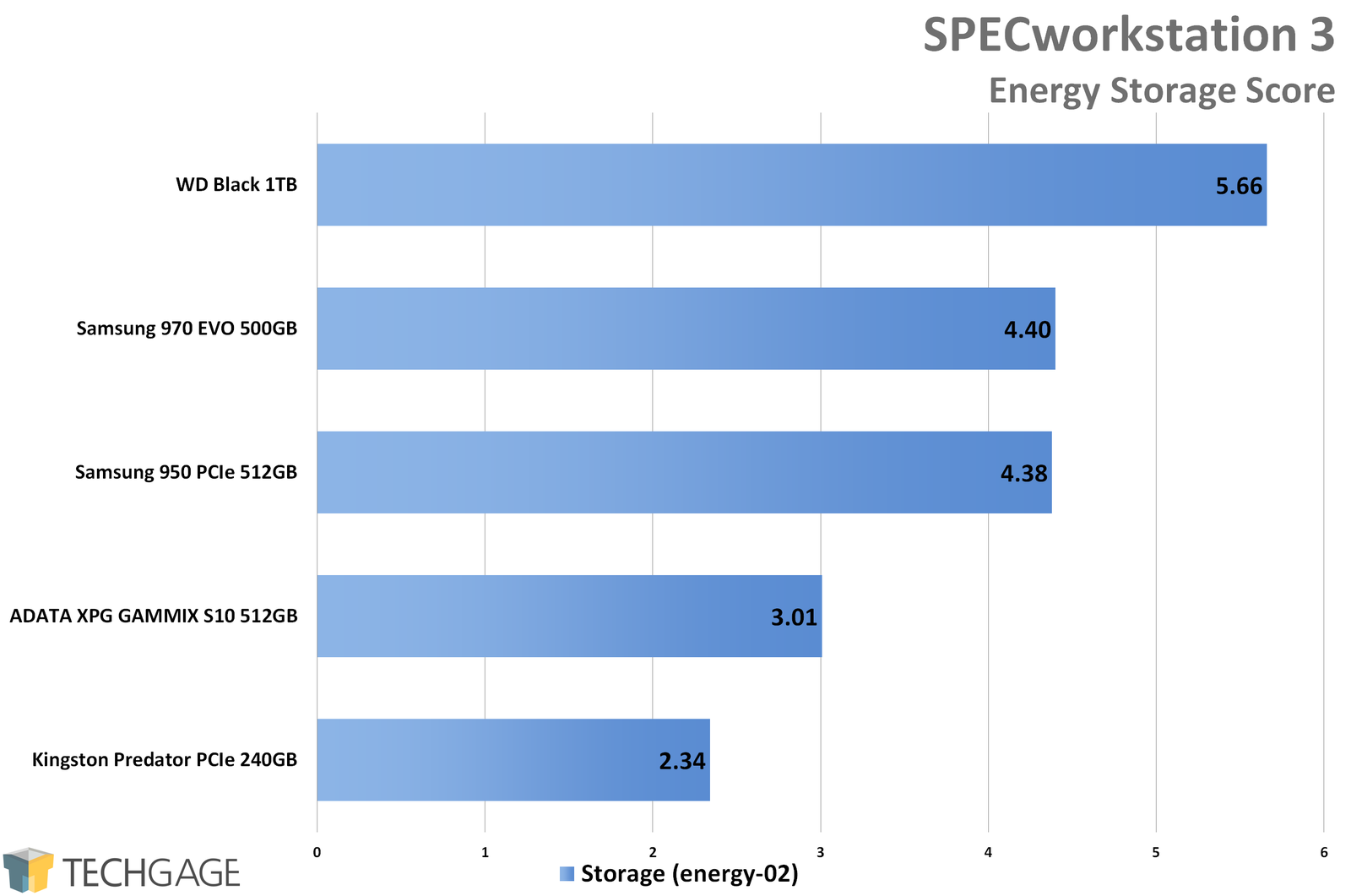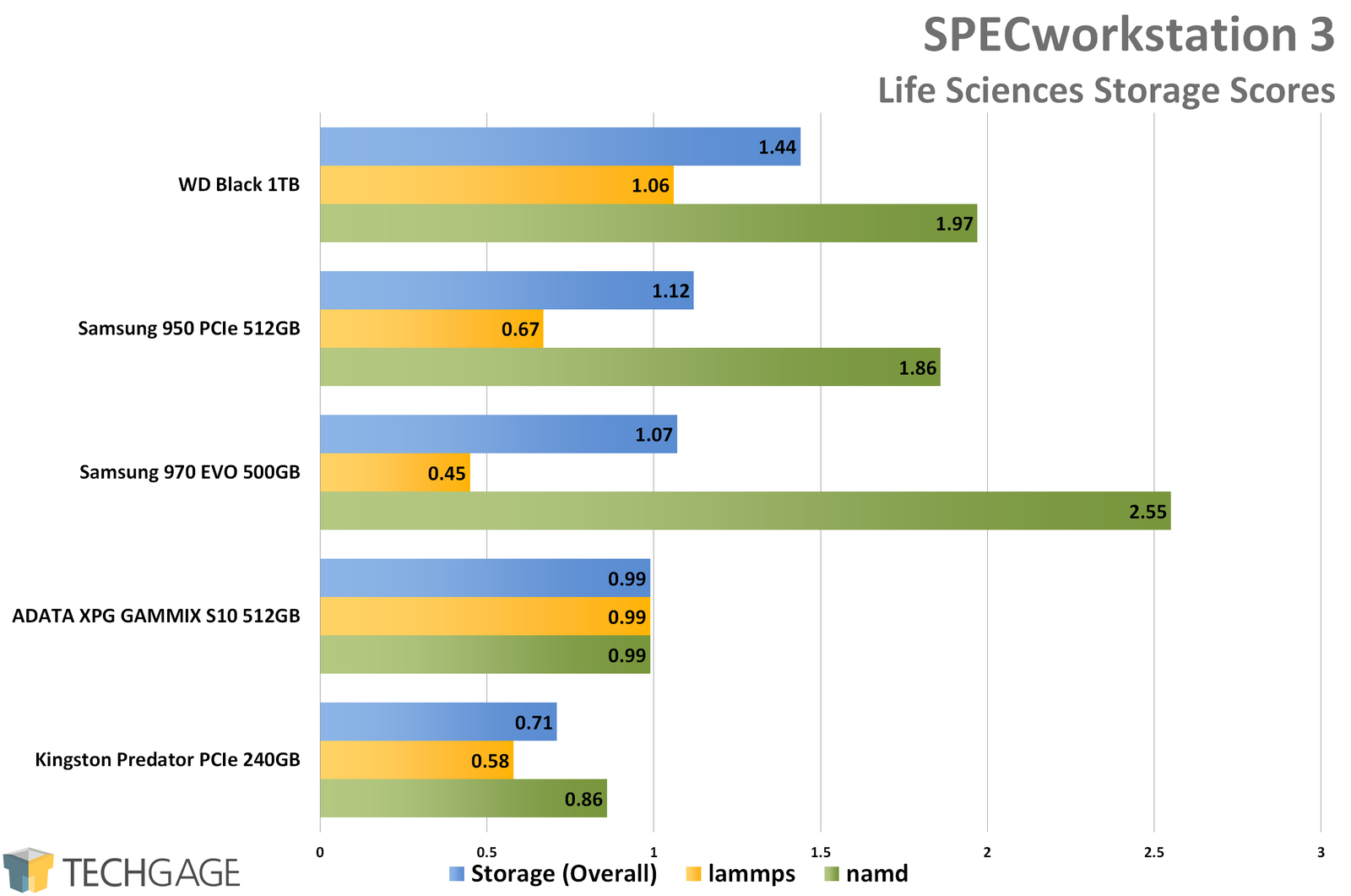- Qualcomm Launches Snapdragon 4 Gen 2 Mobile Platform
- AMD Launches Ryzen PRO 7000 Series Mobile & Desktop Platform
- Intel Launches Sleek Single-Slot Arc Pro A60 Workstation Graphics Card
- NVIDIA Announces Latest Ada Lovelace Additions: GeForce RTX 4060 Ti & RTX 4060
- Maxon Redshift With AMD Radeon GPU Rendering Support Now Available
A New Challenger: Western Digital Black 1TB NVMe M.2 SSD Review

It’s taken some time for Western Digital to hit the consumer side of the SSD market hard, but momentum is growing fast – and for good reason. The company is now producing its own in-house controller, and based on our in-depth testing of the WD Black 1TB NVMe, we’re excited to see where things are going.
Page 3 – ATTO, Robocopy, dBpoweramp & Final Thoughts
ATTO
Once again, the WD Black-branded drive has to show off, giving the best results yet for this venerable benchmark. Once reaching the 512KB access pattern, the WD controller was able to attain 3.1GB/s reads and 2.8GB/s writes. By comparison, the 950 PRO capped out at 2.6GB/s reads and 1.5GB/s writes.
This program emphasizes better than most the hidden performance limitations that used to be common in the earliest generations of solid-state drives, as the m4 results differ drastically with the drive capped around 280MB/s writes, regardless of access size.
RAMDrive Robocopy
Robocopy is one of a few real-world usage scenarios that can highlight differences between SSDs. The movie file is nearly 10GB which exceeds the fast write-cache of some drives. Regardless of whether it is reading or writing, the 1TB Black takes the top spot when sequentially transferring the large movie file. It does well with the large folder with 11,511 files, trading performance with the 950 PRO’s reads and 970 EVO’s writes though it is not able to pull ahead. This shows the controller’s firmware is better optimized for large sequential operations, even if it can’t pull away when handling a considerable number of small files and folders.
dBpoweramp
In an effort to find more real-world tests, we attempted lossless transcoding from FLAC to .M4A with the Apple Lossless Audio Codec (ALAC). Unfortunately, this test remains CPU bound with a Haswell quad-core processor, which goes to show why transcoding and encoding is still relegated to a serious many-core platform. Even so, WD’s drive does well placing in third spot, two seconds from the top.
SPECworkstation 3 – WPCstorage
SPECworkstation 3 is a new upgrade to the SPEC arsenal of benchmarks, incorporating eleven different, real-world programs that stress the disk I/O subsystem in various ways. Even better, results are extremely consistent between runs, even if the Gammix’s Life Science results seem odd because they were repeatable. As a sidenote, the Predator is a 240GB drive and at least 300GB is needed to be able to run the full suite of benchmarks.
The Western Digital Black has a harder time here than it did in the Iometer tests, with individual results trading with the other NVMe capable drives in our test. Even so it manages to win the top overall category score in three out of the five categories.
Final Thoughts
It is readily apparent that this new Western Digital controller is a major player in the NVMe performance market. In 2016, WD spent a cool $19 billion to acquire SanDisk, a major NAND manufacturer that also produced and sold both consumer and enterprise solid-state drives. Western Digital is finally exploiting the synergy of its vertical integration strategy, leveraging SanDisk’s expertise and IP in NAND flash manufacturing and controller design to create a fully integrated final product. The custom in-house controller clearly has some advantages over its competitors, with a faster, more aggressive nCache clearing firmware design being chief among them.
The Western Digital Black 1TB SN700 is a well-rounded drive. It can deliver the best large file sequential performance, yet most frequently was at the top of the random 4K IOPs results. Even under workloads that deliberately fill up the fast-write cache, the 1TB WD Black maintained strong results, showcasing the advantages in its new controller design. Performance consistency was excellent with no erratic or unusual test results that necessitated reruns of benchmarks, something that had plagued its fast-write cache enabled competitors.
Alas, raw performance alone is not enough; we must consider price. And that seals it. The Black models are available at the same or better pricing (Amazon, Newegg) than the 970 EVO. The Samsung 970 EVO may do better in some read benchmarks, and the 950 PRO may do better in some write benchmarks, but at the end of the day, the WD Black is able to combine the two of them into a single drive, offering the best all-around performance at prices less than those of the 970 EVO. And that is when it isn’t simply leaving all its competitors in the dust.
With overall better performance and matching or better prices, the WD Black becomes an easy recommendation. We are giving the WD Black 1TB a Techgage Editor’s Choice award. Anyone in the market for a top-tier performance NVMe solid-state drive will not be able to do better than the WD Black SN700 and the upcoming SN750 series of drives.
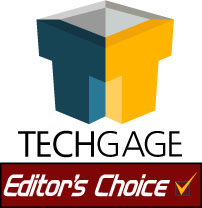
WD Black 1TB NVMe SSD
Support our efforts! With ad revenue at an all-time low for written websites, we're relying more than ever on reader support to help us continue putting so much effort into this type of content. You can support us by becoming a Patron, or by using our Amazon shopping affiliate links listed through our articles. Thanks for your support!




